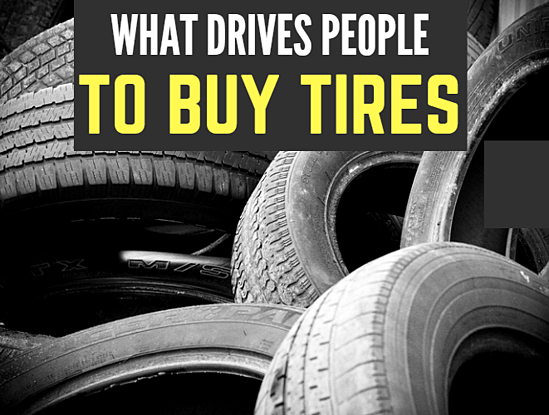Survey Shows Tire Buyers Are Savvy Online Researchers

You can send them reminder cards or mention why tire replacement is a key part of preventative maintenance. But understanding what motivates consumers to make that decision outside the sales pitch is not always a straightforward process.
Consumer Reports recently conducted a survey to get answers about the tire purchasing process and the consumer’s feeling about tire installation. What they found was there wasn’t a single reason for purchasing, but it resulted from many different factors. But what stood out was the finding that the majority of consumers (86 percent) did research before going to a tire dealer, which suggests that direct sales pitches may be less effective.
What might work better? Giving them a good deal on price. Also, since 65 percent of customers research online before they buy, strengthening your online presence to make sure you’re part of the conversation is just as important. Finally, according to buyers, the most successful retailers are the ones who had compelling prices and high installation quality.
“A clear takeaway is that using the internet can empower consumers to do their research in advance, compare pricing, and even purchase tires and ship them to a local shop for installation. We found that savvy shoppers were able to successfully haggle, often saving money and sometimes gaining free extras,” said Adam Troy, a senior survey researcher for Consumer Reports.
Other findings include:
- For the majority of consumers (80 percent), the buying process starts when they notice worn tread on their tires. Most people see this themselves, but for a third, it was pointed out to them by a mechanic.
- The second most common reason why people buy tires is damage, most likely sidewall damage, which is to blame for 42 percent of all cases. The rest were caused by a flat tire (27 percent), road hazard (27 percent) or defect (6 percent).
- The most important feature the tire buyer looks for when purchasing is all-weather grip (54 percent). It’s no coincidence that all-weather is a feature that is easily searchable online with several sites offering test comparable of different brands, which suggests consumers may be less persuaded by sales pitches or marketing claims, and more by test results by third-party experts.
- The other dominant features consumers look for when buying: Length of warranties (49 miles), brand (47 percent), traction (44 percent), handling (43 percent), braking (31 percent), free follow-up service (31 percent), price (31 percent), temperature ratings (27 percent), tread type (23 percent), and the recommendation of the retailer (20 percent).
- Independent tire retailers remain the number one outlet where consumers buy tires. 21 percent of shoppers go there, followed by Discount Tire (15 percent), Costco (15 percent), and car dealerships (14 percent). The majority of shoppers (89 percent) preferred to buy tires at the same place where they get them installed.
How have you changed your online presence to provide shoppers more information? Do you offer installation discounts?